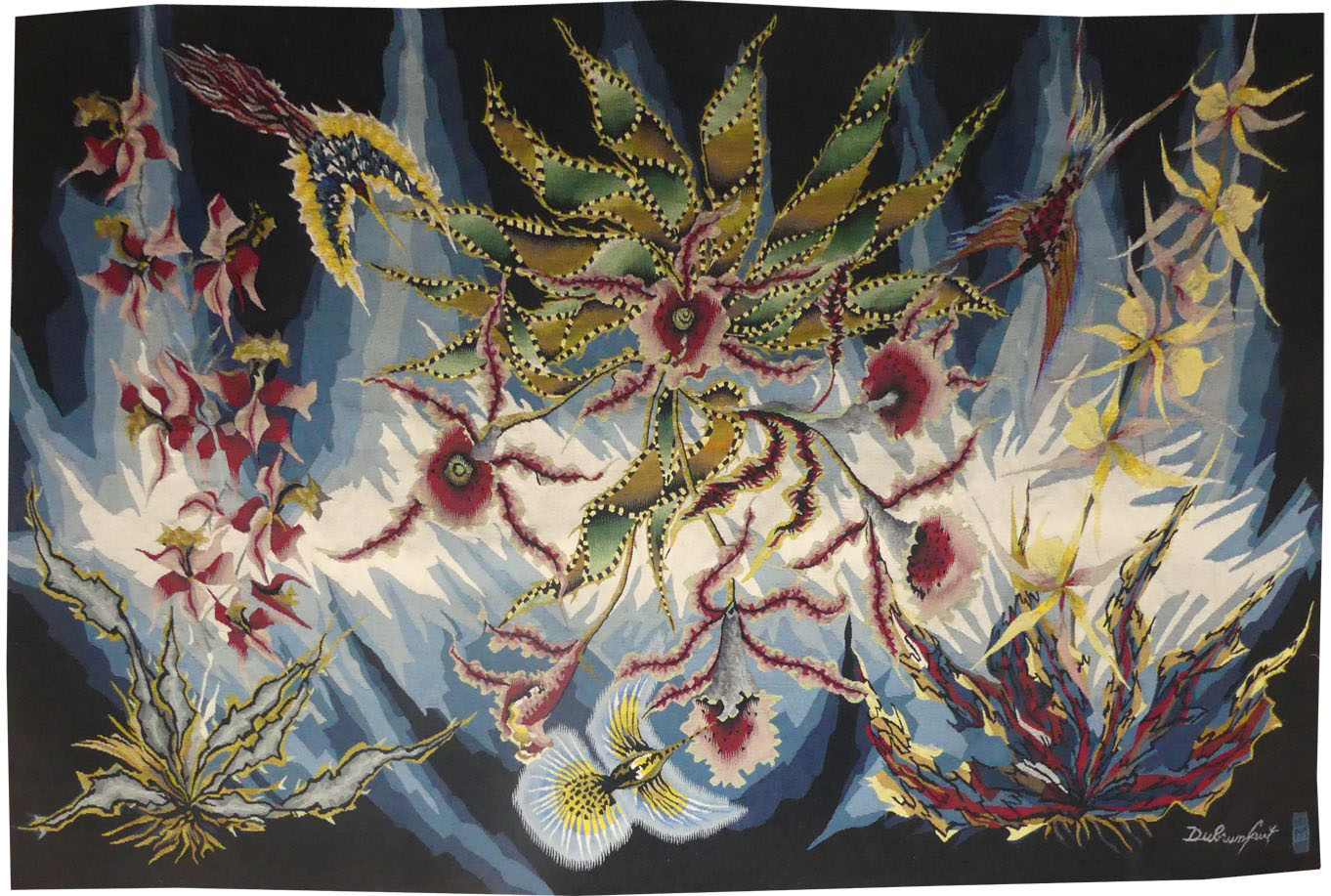Flore des tropiques (tropical flora)
Aubusson tapestry woven in the Four workshop.
With label, n°EA.
Circa 1975.
Edmond Dubrunfaut can be considered as the great 20th century renovator of the Belgian tapestry tradition. He founded a weavers’ workshop in Tournai as early as 1942, then, in 1947, created the Centre de Rénovation de la Tapisserie de Tournai. He produced for various Belgian workshops (Chaudoir, de Wit,...) numerous cartoons destined notably to adorn Belgian embassies throughout the world. Moreover, Dubrunfaut was a teacher of monumental art forms at the Academie des Beaux-Arts de Mons from 1947 to 1978 and then, in 1979, contributed to the creation of the Fondation de la tapisserie, des arts du tissu et des arts muraux de Tournai, a veritable heritage centre for the art of the tapestry in Wallonie. His style, characterised by figuration, strong colour contrasts, draws direct inspiration from nature and animal life (as with Perrot, for example, this artist has a net predilection for birdlife).
Towards the end of his career, Dubrunfaut tended to a language of fantasy (whose sharpened forms are reminiscent of Marc Petit), and whose use of motif (humming birds and exotic vegetation) looks over its shoulder at Lurçat.


